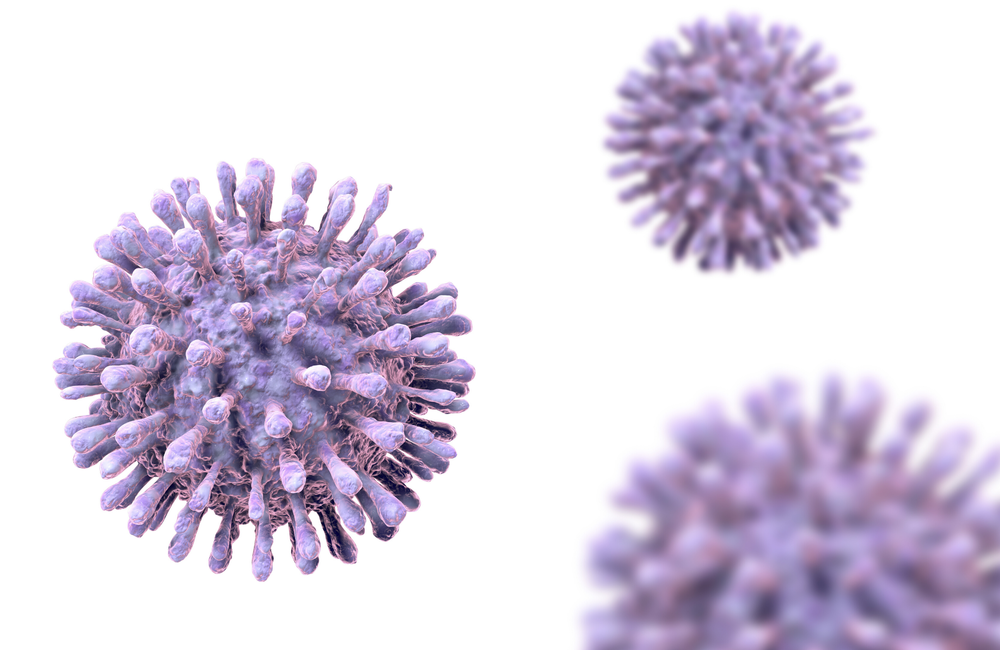
The presence of a mutation that causes resistance to lamivudine and emtricitabine did not increase the risk of viral rebound in the vast majority of people with HIV who switched to a two-drug regimen of dolutegravir/lamivudine when virally suppressed, French researchers report in the Journal of Global Antimicrobial Resistance.
But the researchers say that they are concerned about the risk of viral rebound in a subset of people with lamivudine or emtricitabine resistance – those who had only been virally suppressed for a short time before switching to two-drug treatment containing lamivudine.
The question of whether it is safe to switch to two-drug treatment that contains lamivudine (3TC) or emtricitabine (FTC) is relevant for many people with HIV who have experienced the failure of a regimen that contained one of these widely used antiretrovirals. When regimens containing either of these drugs fail, the first resistance mutation to appear is usually the M184V mutation, which causes high-level resistance to lamivudine and emtricitabine.
Three-drug treatment containing an integrase inhibitor (dolutegravir or bictegravir) is powerful enough to suppress HIV when the M184V mutation is present, even if the regimen contains lamivudine or emtricitabine.
Dropping a third drug may be attractive, as it could minimise the risk of any long-term side-effects associated with the third drug, typically abacavir (cardiovascular disease), tenofovir disoproxil fumarate (bone thinning or declining kidney function) or tenofovir alafenamide (weight gain).
But concerns have been voiced about the risk of dropping a third drug in the regimen and switching to dolutegravir/lamivudine (Dovato). Some researchers have argued that in the presence of the M184V mutation, lamivudine may not contribute enough antiviral effect, effectively leaving people on single-drug therapy with dolutegravir and at higher risk of treatment failure. People with major resistance-associated mutations were excluded from the clinical trials which led to the licensing of dolutegravir/lamivudine.
To investigate this question, researchers carried out the LAMRES study, which looked at the risk of viral rebound after switching to dolutegravir and lamivudine in people with or without the M184V mutation.
The study analysed virological outcomes in people who had switched to dolutegravir/lamivudine with a fully suppressed viral load and who had undergone at least one resistance test prior to the treatment switch. 712 people receiving treatment at clinics in France, Italy and Spain were eligible for inclusion in the retrospective analysis.
Study participants were predominantly male (77%), had been taking antiretroviral therapy for a median of seven years and 52% had been virologically suppressed for at least five years. Almost all (707 out of 712) had taken lamivudine or emtricitabine previously and 30% had taken dolutegravir.
Sixty (8.4%) had the M184V mutation detectable in at least one previous resistance test. In eleven the mutation was detectable only in HIV DNA and not in replicating virus.
Participants with the M184V mutation were more likely to have a history of a CD4 count below 200 (advanced HIV) (58% vs 30% without M184V), a longer treatment history (20 years vs 7 years without), more episodes of treatment failure (3 vs 0) and more previous treatment regimens (10 vs 3) (all p< 0.001).
In this study, viral rebound was defined as two consecutive viral load measurements above 50 copies/ml. There was no statistically significant difference in the risk of viral rebound between people with the M184V mutation and those without one, two or three years after switching to two-drug treatment. At three years post-switch, the probability of viral rebound was 11.9% in those with M184V compared to 6.3% in those without (p=.206). When the researchers used more stringent definitions of viral rebound (above 200 copies/ml or 1,000 copies/ml), they still found no association between M184V and a higher risk of viral rebound.
When the researchers stratified participants by presence of the M184V mutation and the duration of viral suppression between detection of the M184V mutation and switching to dual therapy, they found that people with the M184V mutation who were virally suppressed for less than three-and-a-half years prior to switching were significantly more likely than those with M184V and a longer duration of viral suppression to experience viral rebound within three years of switching (22.7% vs 7.8%, p =0.007).
But, after adjusting for variables that were significant in univariate analysis (HIV exposure category, nationality, ethnicity, peak viral load, prior integrase inhibitor failure), the duration of viral load suppression prior to switching ceased to be significant and the only factors associated with rebound were peak viral load above 100,000 copies/ml and HIV exposure category (heterosexual or injecting drug use). However, the researchers say that they can’t rule out biases in the type of treatment given to individuals on the basis of characteristics such as drug use. They note that three other studies have observed that a shorter period of suppression prior to a switch to dual therapy is associated with a higher risk of viral rebound.
After viral rebound, 18 out of 39 people resuppressed HIV without changing treatment. In most cases, viral rebound was so small that genotypic resistance testing was not feasible and only eight people underwent resistance testing after rebound. Only one sample showed the M184V mutation and one showed integrase inhibitor resistance.
“The effect of a short duration of previous virological suppression in individuals with M184V remains troubling and needs ad hoc clinical trials to be confirmed,” the researchers conclude. They speculate that a shorter period of viral suppression prior to a switch to dual therapy may not allow time for the pool of viruses carrying the M184V mutation in the reservoir of HIV-infected cells to diminish under treatment. A larger pool of viruses with the M184V mutation might raise the risk of viral rebound.
Santoro MM et al. Virological efficacy of switch to DTG plus 3TC in a retrospective observational cohort of suppressed HIV-1 patients with or without past M184V: the LAMRES study. Journal of Global Antimicrobial Resistance, 31: 52-62, 2022.
